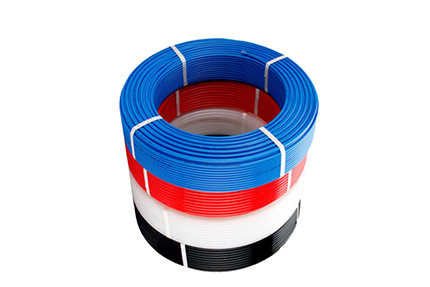What Is PA6 Nylon Pneumatic Tubing? A Complete Guide for Industrial Users
In industrial automation and pneumatic systems, the right tubing choice can directly impact performance, durability, and safety. One of the most widely used options in demanding applications is PA6 nylon pneumatic tubing. But what exactly is it, and why is it favored across so many sectors?
This article dives into the characteristics of PA6 tubing, its advantages, typical applications, and how it compares to other materials like PA12 or polyurethane.

What Is PA6?
PA6, also known as Polyamide 6 or Nylon 6, is a semi-crystalline engineering thermoplastic. It is known for its excellent mechanical strength, thermal resistance, and dimensional stability. Among all polyamide variants, PA6 offers one of the best balances between performance and cost.
In the world of pneumatic tubing, PA6 is commonly used when higher pressure, temperature resistance, or structural rigidity is required.
🧪 Key Features of PA6 Pneumatic Tubing
✅ 1. High Pressure Resistance
PA6 tubing can withstand working pressures up to 25–30 bar, making it ideal for medium to heavy-duty pneumatic circuits.
✅ 2. Excellent Heat Resistance
With a continuous working temperature of around -40°C to +120°C, PA6 is suitable for high-temperature environments such as robotic arms, painting lines, or industrial ovens.
✅ 3. Superior Mechanical Strength
Its high tensile strength makes PA6 a reliable option in fixed piping systems or long runs where tubing cannot flex freely.
✅ 4. Good Abrasion Resistance
Thanks to its strong molecular structure, PA6 resists wear and friction damage, even in dynamic or high-speed motion systems.
✅ 5. Chemical Resistance
PA6 resists many oils, greases, hydrocarbons, and weak acids. However, its resistance to moisture is relatively lower compared to PA12, which we’ll discuss later.
⚙ Typical Applications of PA6 Nylon Tubing
Factory automation systems
CNC machines and robotic arms
Air brake systems in vehicles
Pneumatic tools and air supply lines
Packaging and textile equipment
Compressed air distribution networks
Its rigidity makes it especially suited for straight-line routing or secured installations where tubing doesn’t need to flex frequently.



